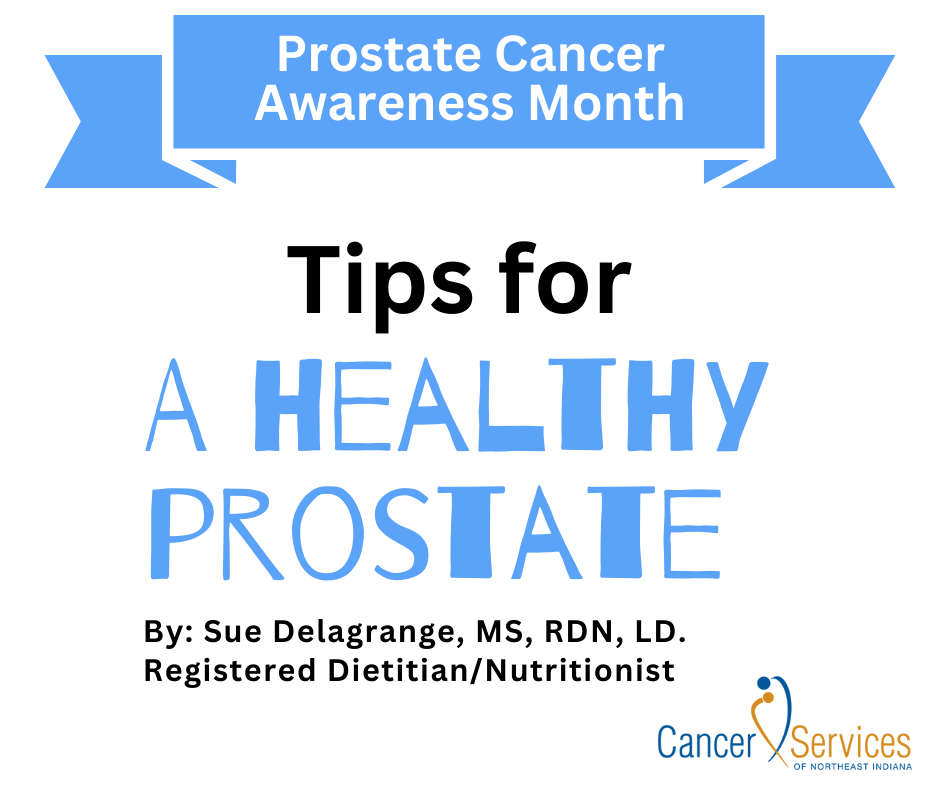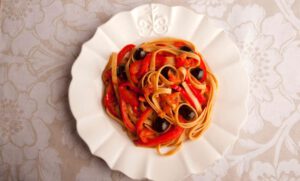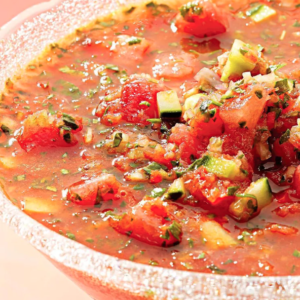
Prostate cancer is the second most common cancer among men worldwide. Currently, 1 in 8 men will likely have prostate cancer in his lifetime. Diagnosis of the disease becomes more common as men age. In the US, about 60% of all prostate cancers are diagnosed in men over age 65. (American Institute of Cancer Research – AICR)
What is Prostate Cancer?
Cancer is the result of abnormal cell growth, which takes over the body’s normal cell function, making it harder for the body to work the way it should. Prostate cancer develops when abnormal cells form and grow in the prostate gland. Not all abnormal growths are cancerous (malignant). Some tumors are not cancerous (benign).
Benign growths, such as a benign prostatic hyperplasia (BPH), are not life threatening. They do not spread to nearby tissues or other parts of the body. Cancerous growths, such as prostate cancer, can spread (metastasize) to nearby organs and tissues such as the bladder or rectum, or to other parts of the body. If the abnormal growth is removed, it can still grow back. Prostate cancer can be life threatening if it spreads far beyond the prostate.
What are the Causes of Prostate Cancer?
The cause of prostate cancer is unknown, but researchers know the following can increase a man’s risk for the disease.
Age: As men age, their risk of getting prostate cancer increases. Damage to the DNA (genetic makeup) of prostate cells is more likely to occur in men over the age of 55.
Ethnicity: African American men have a higher rate of the disease. One in six African American men will be diagnosed with prostate cancer. Prostate cancer occurs less often in Asian American and Hispanic/Latino men than in non-Hispanic white men.
Family History: Men who have a grandfather, father or brother with prostate cancer face a higher risk of getting the disease. Having family members with breast and ovarian cancer also raises a man’s risk for prostate cancer.
Weight: Studies link being overweight in your fifties and later puts you at a greater risk of developing prostate cancer. Doctors advise keeping to a healthy weight to reduce your risk.
How Can You Lower Your Risk of Developing Prostate Cancer?
While there is no absolute way to prevent prostate cancer, there are some things you can do that may lower your risk. Maintaining a healthy body weight, getting regular exercise, and paying attention to what you eat and drink all play key roles.
Maintain a healthy weight:
Obesity can be a risk factor for developing more aggressive prostate cancer. In general, losing weight and maintaining a healthy weight as you age can help reduce your risk of cancer and many other health problems. This can be achieved through a combination of healthy eating and regular exercise.
The good news here is that at every phase of your life – just as with smoking – changing your lifestyle will help you. If you are a young man, losing weight might stop the disease from developing. If a tumor is already there, but very small, and not yet PSA-detectable, losing weight may delay the growth of cancer. If you have a diagnosis of cancer, losing weight can slow or help prevent the cancer from growing to form metastases (from spreading to other sites in the body).
Regular Exercise:
In addition to helping you achieve a healthy weight, exercise can reduce inflammation, improve immune function, and fight some of the negative health effects of a sedentary lifestyle—all of which can help prevent cancer. The benefits of exercise include increased muscle mass, better metabolism, and improved cardiovascular health. Try activities like:
- Walking
- Running
- Bicycling
- Swimming
Exercise doesn’t have to be boring. Change your routine and invite your friends to participate. You’re more likely to work out if it’s fun.
Paying attention to what you eat and drink:
Instead of focusing on specific foods, researchers suggest an overall pattern of healthy eating. Eating healthier isn’t as difficult as you might think. Making even one healthier decision each day can make a difference and help you build healthy habits. Here is a summary of what the experts recommend.
Eat at least five servings of fruit and vegetables every day. Go for those with deep color. One color that is particularly helpful when you are trying to keep your prostate healthy is Red. Eat red fruit and vegetables. Tomatoes, watermelon, pink grapefruit, red bell peppers, red cabbage, and mangos all contain a powerful antioxidant called lycopene.
A 2020 review of studies of this topic notes that current research supports the idea that lycopene can effectively reduce the progression and growth of prostate cancer cells.
Limit fat intake. A 2014 review of research notes there may be a link between saturated fats and an increased prostate cancer risk. Choose healthy fats, such as olive oil, nuts (almonds, walnuts, pecans) and avocados. Limit saturated fats from your diet by reducing or eliminating foods like whole milk, cheese, and butter. Avoid partially hydrogenated fats (trans fats), which are in many fast foods and packaged foods.
Limit your consumption of red meat, including beef, pork, lamb, and veal. Avoid consuming processed meats, such as bologna and hot dogs. Focus more on healthier protein sources such as: fish, skinless poultry, beans, and eggs.
Some types of fatty acid, known as Omega-3, may help reduce your risk of developing cancer in general. Omega-3 is found in dietary supplements as well as certain fish, including Sardines, Tuna, Mackerel, Trout, and Salmon.
Choose whole-grain bread instead of white bread and choose whole-grain pasta and cereals.
Avoid sugar-sweetened drinks, such as sodas and many fruit juices. Eat sweets as an occasional treat. The recommendation for men is to consume less than 36 grams of sugar per day. This is equal to 9 teaspoons.
Cut down on salt. Choose foods low in sodium by reading and comparing food labels. Limit the use of canned, processed, and frozen food entrees. The sodium recommendation is less than 2300 mg/d for individuals without high blood pressure, and less than 1500 mg/d for individuals with high blood pressure.
Watch portion sizes. Eat slowly and stop eating when you are full.
Recipes for a Healthy Prostate
Fennel & Tomato Gratin (click here for an easier to print version)
Photo and recipe courtesy of cookforyourlife.org
Ingredients:
5 medium fennel bulbs, stalks removed
1 cup homemade breadcrumbs, or to taste
¾ cup finely grated Parmesan cheese
Black pepper, to taste, Freshly ground
2 tablespoons olive oil
For the quick tomato sauce:
2 tablespoons olive oil
1 to 2 cloves garlic, smashed and thinly sliced lengthwise
1 small dried red pepper, seeds removed (optional)
1 ½ pounds ripe plum tomatoes (about 6-8), coarsely chopped
½ teaspoons salt or to taste
1 tablespoon, freshly grated Parmesan cheese (optional)
Directions:
Preheat the oven to 350 degrees F. Prepare the Quick Tomato Sauce.
Heat oil in a heavy frying pan over medium-high heat. When the oil starts to shimmer, add the garlic and sauté until golden. Do not let it burn or it will become bitter. If you like a spicy sauce, add the pepper.
Add the tomatoes and sauté. There will be a lot of spitting and hissing as the wet tomatoes hit the hot oil. Turn the heat to medium-low and cook the tomatoes down until they are reduced by about half and have taken on a more orangey hue. Adjust the seasoning by adding salt to taste. If the sauce looks like it’s drying out too much, add a little water. Continue to simmer until the sauce has thickened, about 10 minutes. Set it aside.
Halve the fennel bulbs and parboil in salted water for about 10 minutes or until they are just soft and slightly translucent. Drain. Cut into quarters. If the bulbs are very large, cut each half into 3 pieces. Set it aside.
Toss the breadcrumbs and Parmesan cheese together in a bowl. Set it aside.
Spread a thin layer of tomato sauce on the bottom of a shallow gratin dish, about a cup. Place the fennel cut sides down on top of the sauce in a tight single layer. Pour the rest of the sauce over them and spread evenly.
Sprinkle the fennel with the breadcrumb mixture until you have a generous crust. Drizzle with the olive oil and bake for 30 minutes covered with foil, then 10 minutes uncovered, or until the breadcrumbs are golden.
Spicy Pepper Pasta (click here for an easier to print version)
Photo and recipe courtesy of cookforyourlife.org
Ingredients:
6 roma tomatoes
12 ounces whole wheat fettuccine
3 tablespoons olive oil
4 garlic cloves, minced
1 teaspoon dried basil, or 2 tablespoons fresh basil
1 teaspoon dried oregano
2 teaspoons crushed red pepper
3 large red bell peppers, seeded and sliced thin
1 (6 ounce) can pitted black olive in brine, drained
3 tablespoons red wine vinegar
Salt and pepper, to taste
Parmesan cheese, to taste (optional)
Directions:
In a large stockpot bring salted water to boil. Put the tomatoes in for 40 to 60 seconds. Remove the tomatoes and rinse under cold water. Peel the tomatoes then deseed and chop them. Set it aside.
Add the pasta to the boiling water. Cook until al dente, then drain.
Meanwhile, heat the olive oil in a large pan over medium heat. Add the garlic and sauté for one minute. Do not let it burn. Add the crushed red pepper, dried basil (if using fresh add at step 5) and dried oregano. Cook for another minute. Add the chopped tomatoes and cook for 10 minutes stirring occasionally and smashing them against the side of the pan with a fork or spoon.
Add the red bell peppers and cook for another 10 minutes, or until the peppers are tender.
Turn off the heat. Add the olives and red wine vinegar. Mix well. Stir in the pasta, taste for seasoning, and let sit for 5 minutes to let the flavors combine. Top with grated Parmesan cheese and fresh basil if used.
Watermelon Gazpacho (click here for an easier to print version)
Photo and recipe courtesy of eatingwell.com
8 cups finely diced seedless watermelon
1 medium cucumber, peeled, seeded and finely diced
½ red bell pepper, finely diced
¼ cup chopped fresh basil
¼ cup chopped flat-leaf parsley
3 tablespoons red-wine vinegar
2 tablespoons minced shallot
2 tablespoons extra-virgin olive oil
¾ teaspoon salt
Directions:
Mix watermelon, cucumber, bell pepper, basil, parsley, vinegar, shallot, oil, and salt in a large bowl.
Puree 3 cups of the mixture in a blender or food processor to the desired smoothness; transfer to another large bow.
Puree another 3 cups and add to the bowl. Stir in the remaining diced mixture.
Serve at room temperature or chilled.







